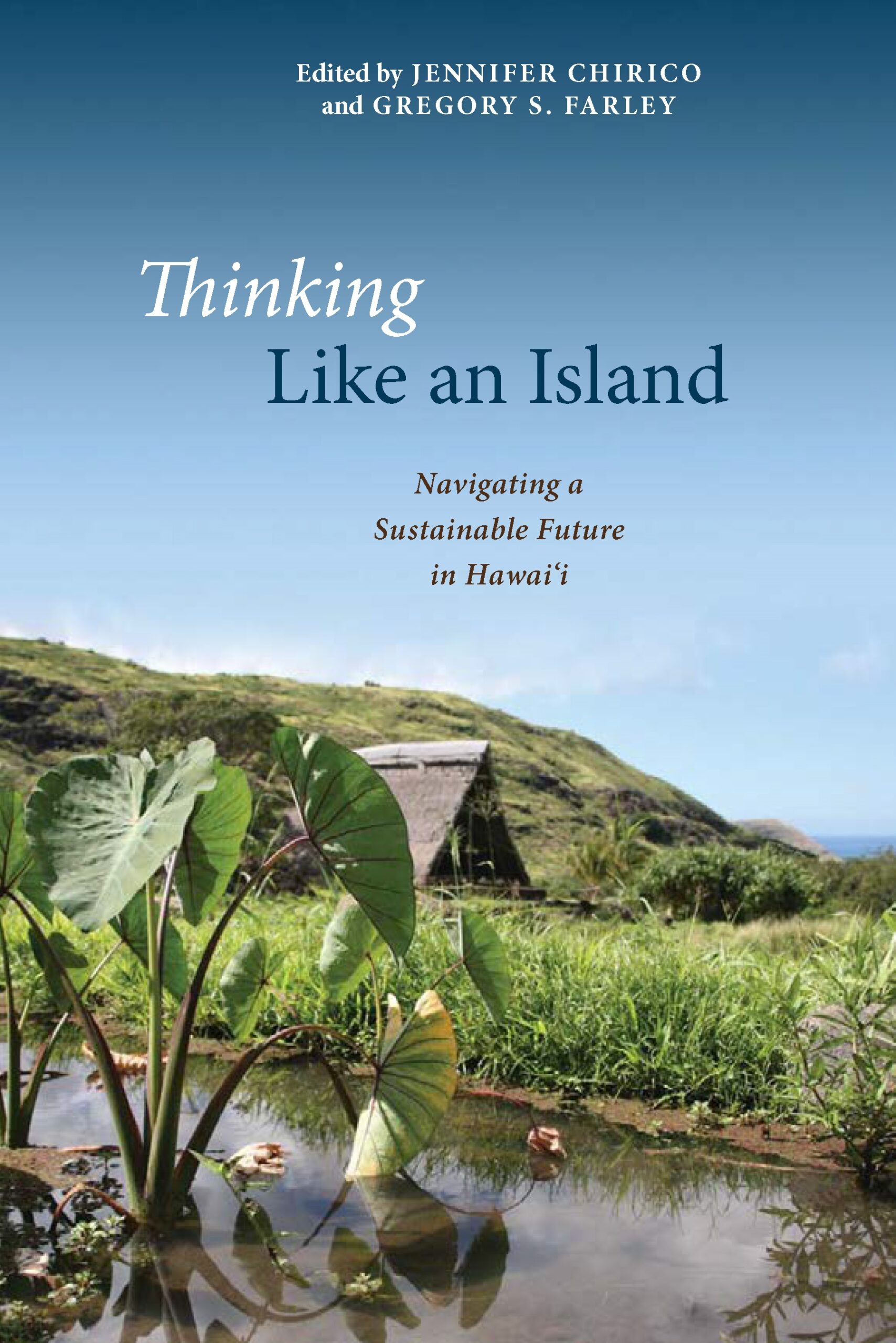Thinking Like an Island: Navigating a Sustainable Future in Hawai‘i
- About the Book
-
Hawaii is a rare and special place, in which beauty and isolation combine to form a vision of paradise. That isolation, though, comes at a price: resources in modern-day Hawaii are strained and expensive, and current economic models dictate that the Hawaiian Islands are reliant upon imported food, fuels, and other materials. Yet the islands supported a historic Hawaiian population of a million people or more. This was possible because Hawaiians, prior to European contact, had learned the ecological limits of their islands and how to live sustainably within them.
Today, Hawaii is experiencing a surge of new strategies that make living in the islands more ecologically, economically, and socially resilient. A vibrant native agriculture movement helps feed Hawaiians with traditional foods, and employs local farmers using traditional methods; efforts at green homebuilding help provide healthy, comfortable housing that exists in better harmony with the environment; efforts to recycle wastewater help reduce stress on fragile freshwater resources; school gardens help feed families and reconnect them with local food and farming. At the same time, many of the people who have developed these strategies find that their processes reflect, and in some cases draw from, the lessons learned by Hawaiians over thousands of years.
This collection of case studies is a road map to help other isolated communities, island and mainland, navigate their own paths to sustainability, and establishes Hawaii as a model from which other communities can draw inspiration, practical advice, and hope for the future.
- About the Author(s)
-
Jennifer Chirico, Editor
Jennifer Chirico, PhD, MPH, is president of Susty Pacific LLC, a Hawai`i-based firm specializing in responsible business and sustainability consulting. Previously, she was executive director of the Sustainable Living Institute of Maui at the University of Hawai`i Maui College.Gregory S. Farley, Editor
Gregory S. Farley is director of the Center for Leadership in Environmental Education (CLEEn) at Chesapeake College in Wye Mills, Maryland. A marine zoologist and evolutionary biologist, he holds an MS in biological science from Florida State University and a BS in biological science from Duke University.
- Reviews and Endorsements
-
- The book investigates new strategies to make living in the islands ecologically more sustainable by respecting native Hawaiian culture and integrating it with modern concepts and new technologies.
—People and Culture in Oceania - Based on Native cultural practices, it offers strategies for Hawai‘i's food security, sustainable agriculture, water systems, energy production, green architecture, green tourism, and green education. The importance of this work rests on its applicability to all island and coastal communities around the world. A valuable volume for collections supporting sustainability studies, cultural studies, geography, environmental sociology, and environmental studies and policy.
—CHOICE: Current Reviews for Academic Libraries - This book eloquently highlights examples of the quadruple bottom line of cultural, social, environmental, and economic value as the key components of a resilient and regenerative way of life. Hawai`i’s isolation can be transformed from a liability to a strength as we invest community, tangible, and financial assets in strategies that not only minimize harm to people and ecosystems but, through traditional and innovative practices, enhance our collective capacity to thrive in turbulent times.
—Michael Kramer, coauthor of The Resilient Investor and managing partner, Natural Investments - Blending outstanding scholarship with practical application, this book presents a portfolio of innovative, creative, and tangible projects that integrate cultural, ecological, and economic approaches. Most importantly, it uses Hawaiian indigenous knowledge and history as the basis for ecological sustainability, incorporating the best practices of the past and present with a vision for the future. Every Hawai`i resident and visitor who is interested in a sustainable future should read this book. More than just a blueprint for Hawai`i’s future, Thinking Like an Island challenges readers to examine the meaning and purpose of sustainable living.
—Mitchell Thomashow, author of The Nine Elements of a Sustainable Campus, president emeritus, Unity College
- The book investigates new strategies to make living in the islands ecologically more sustainable by respecting native Hawaiian culture and integrating it with modern concepts and new technologies.
- Supporting Resources
-





